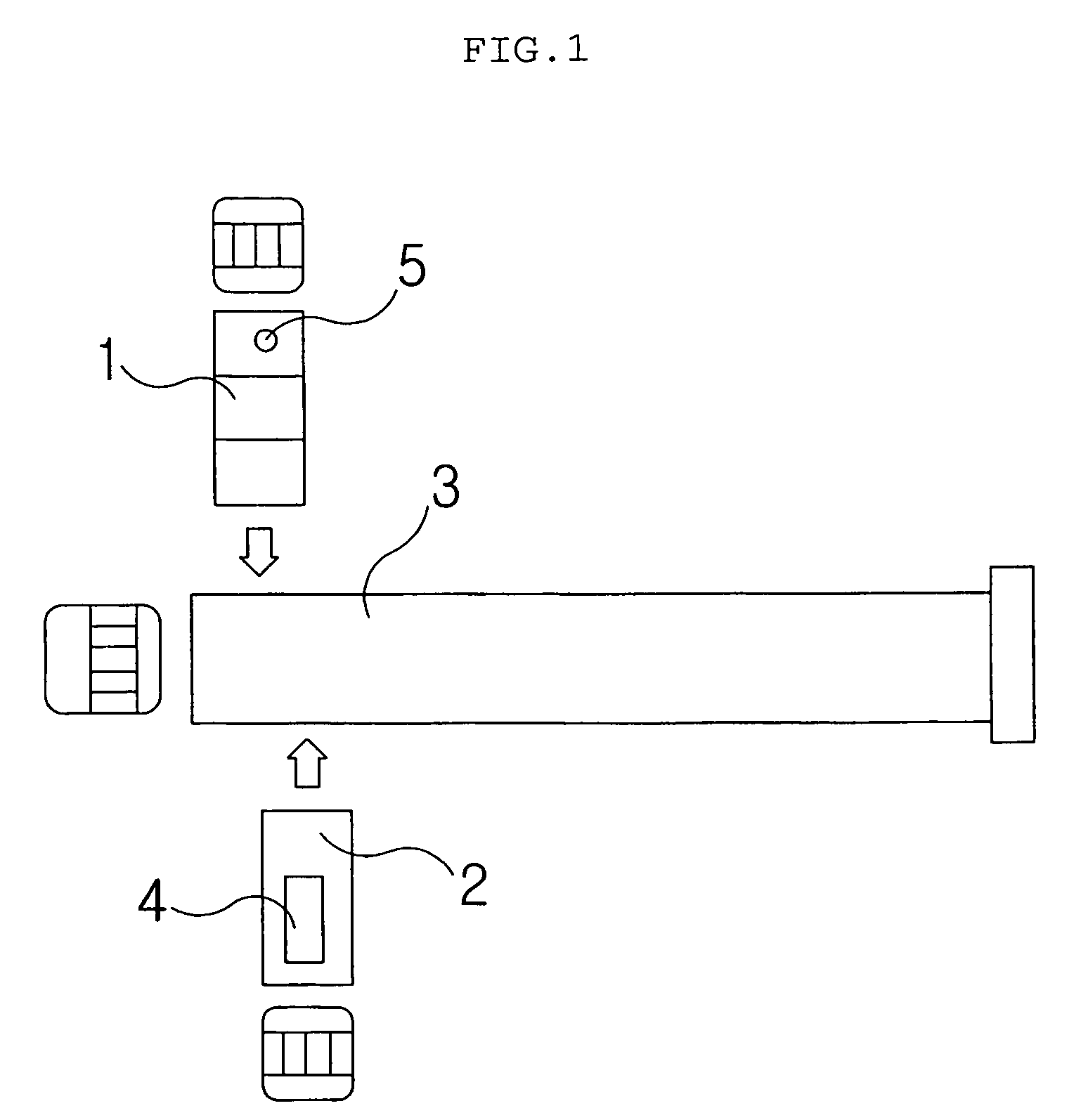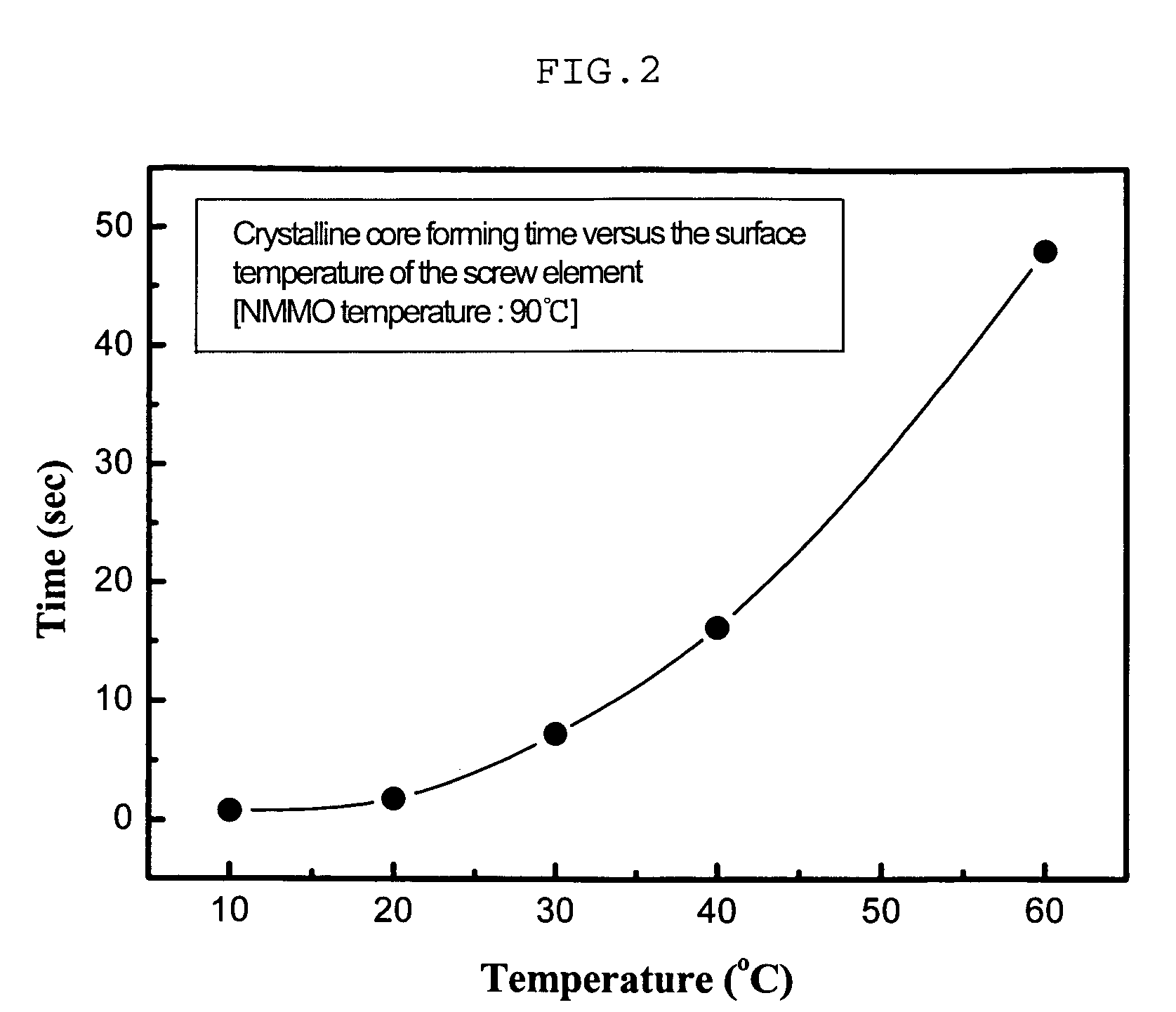Jomogeneous celllulose solution and high tenacity lyocell multilament using the same
a lyocell multilament and homogeneous technology, applied in the direction of transportation and packaging, other domestic articles, adhesive types, etc., can solve the problems of large amount of energy consumption, water under reduced pressure, over-sizing of the apparatus, etc., and achieve excellent tenacity and modulus, reduce the degradation of cellulose, and the effect of high tenacity
- Summary
- Abstract
- Description
- Claims
- Application Information
AI Technical Summary
Benefits of technology
Problems solved by technology
Method used
Image
Examples
example 1
[0060] The cellulose powder is obtained by crashing pulp(DPw(degree of polymerization) of 1,200, made by Buckey company, alpha-cellulose contents of 97%) into powder having 100 micrometer or less diameter. And the cellulose powder is fed into an extruder at the speed of 1.2 kilogram / hour continuously. And at the same time, the NMMO hydrate comprising 13.5% by weight water at 90° C. is fed into the extruder using a fixed quantity-pump at the speed of 8.9 kilogram / hour continuously. In this time, the side feeder for feeding the NMMO is maintained at the temperature of 30° C. to 60° C. The screw of the twin-screw type extruder is rotated at the speed of 200 rpm, and the temperature of the region between the raw material feeding part and kneading part is maintained at the temperature in the range of 50 to 80° C. The cellulose powder and the solid-state NMMO is fed into the extruder and they are mixed, sheared and kneaded in the extruder so as to produce liquid-state cellulose solution. ...
example 2
[0061] Another dope(cellulose solution) is prepared as described in Example 1 without the temperature of the region between the raw material feeding part and kneading part is maintained in the range of 50 to 110° C., so as to maintain the temperature of the kneading part more higher in comparison with that of the Example 1. The properties of the obtained cellulose solution are shown in Table 1.
example 3
[0062] Another dope(cellulose solution) is prepared as described in Example 2 without the content of the water in the liquid-state NMMO is controlled to 10% by weight. The properties of the obtained cellulose solution are shown in Table 1.
PUM
| Property | Measurement | Unit |
|---|---|---|
| Temperature | aaaaa | aaaaa |
| Time | aaaaa | aaaaa |
| Linear density | aaaaa | aaaaa |
Abstract
Description
Claims
Application Information
 Login to View More
Login to View More - R&D
- Intellectual Property
- Life Sciences
- Materials
- Tech Scout
- Unparalleled Data Quality
- Higher Quality Content
- 60% Fewer Hallucinations
Browse by: Latest US Patents, China's latest patents, Technical Efficacy Thesaurus, Application Domain, Technology Topic, Popular Technical Reports.
© 2025 PatSnap. All rights reserved.Legal|Privacy policy|Modern Slavery Act Transparency Statement|Sitemap|About US| Contact US: help@patsnap.com



